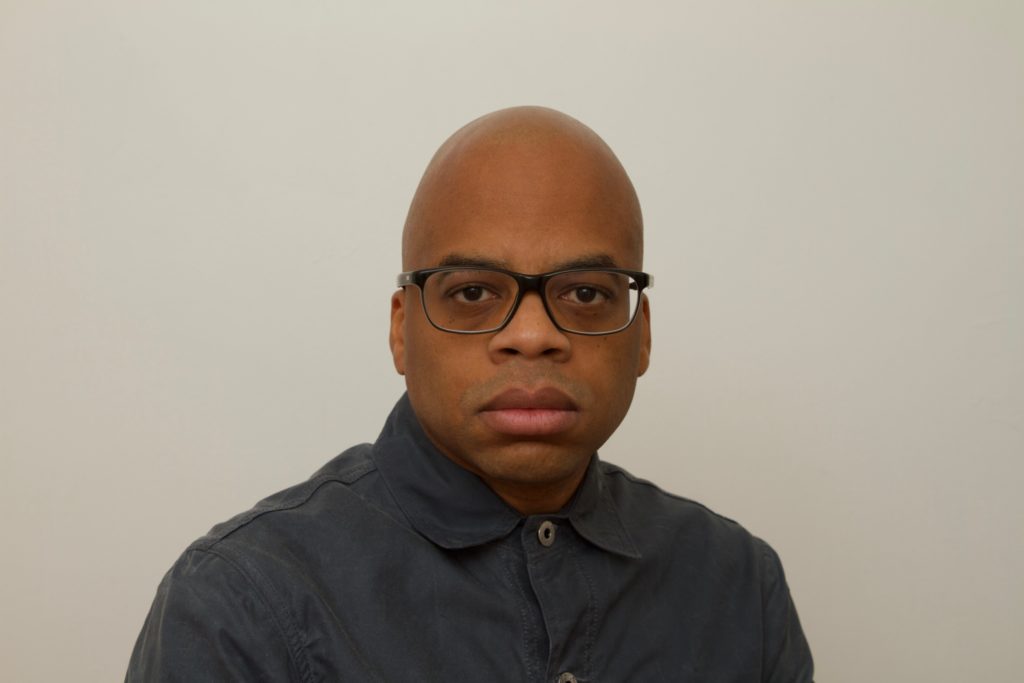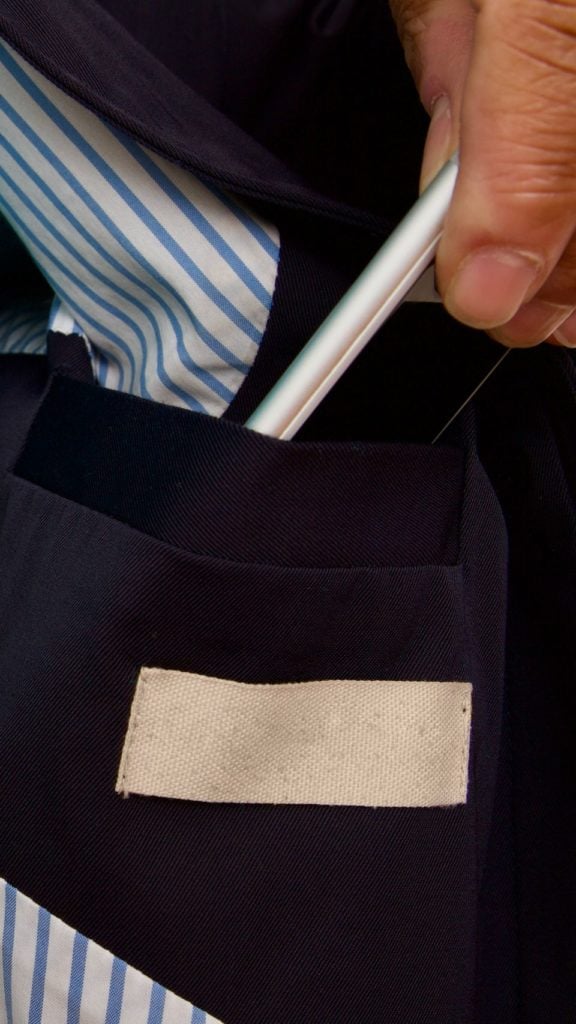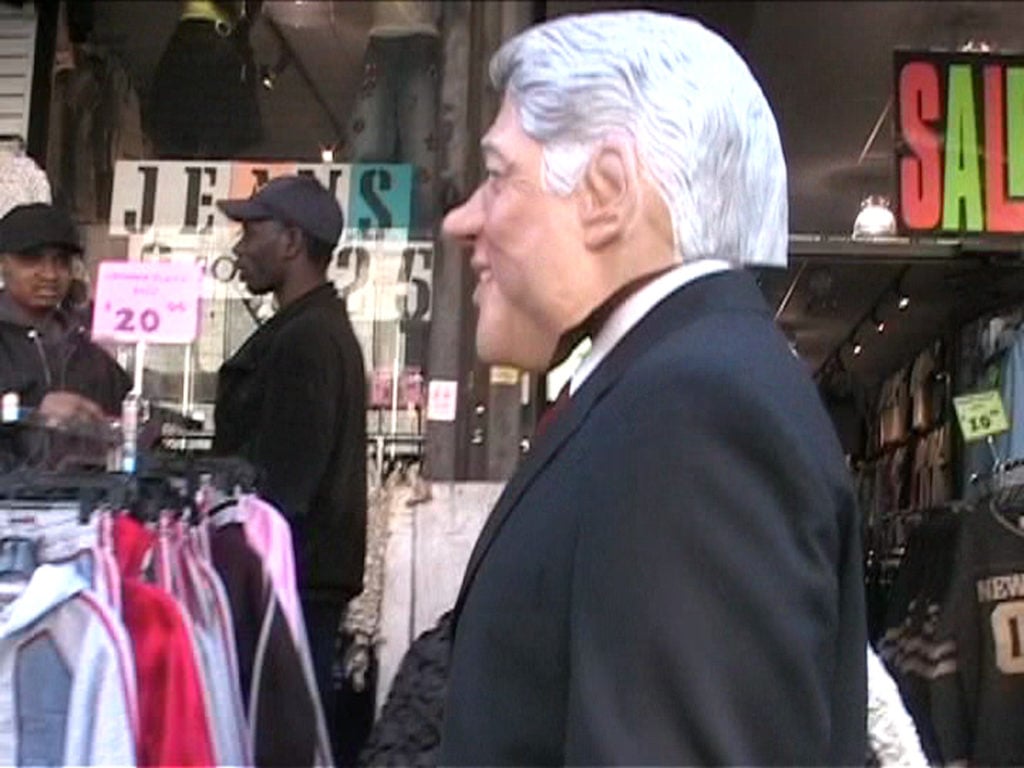On View
‘It’s About a Sort of Twisted Magic’: How One Artist at Frieze New York Is Revealing the Tricks of Racial Profiling
Dave McKenzie's performance for Frieze Live addresses the shameful legacy of discriminatory policing.

Dave McKenzie's performance for Frieze Live addresses the shameful legacy of discriminatory policing.

Tim Schneider

Since we all know that a good magician never reveals his secrets, you could be forgiven for thinking that Dave McKenzie might have intentionally limited the information available about the new work he will debut at Frieze New York this weekend. In collaboration with his gallery, Susanne Vielmetter Los Angeles Projects, the multidisciplinary artist will spend parts of this Sunday, May 6, presenting Furtive Movements as a part of the fair’s new Live program.
The work is being billed as “a solo performance as a magician, meditating on the ways in which the gestures of black bodies… are said to signal danger or the need for surveillance.”
In other words, don’t expect wizard robes or disappearing rabbits. The piece’s form and intent are a wary world apart from entertainment.

Promotional image for Dave McKenzie’s Furtive Movements (2018). Courtesy of the artist and Susanne Vielmetter Los Angeles Projects.
“I certainly won’t be in a magic costume,” McKenzie told artnet News about Furtive Movements before the fair’s opening. “It was an idea about a sort of twisted magic, that we were casting spells unbeknownst to us.”
Furtive Movements owes its title to a charged law-enforcement phrase that fueled the intrusive, racially motivated overreaches of New York’s stop-and-frisk (or stop-question-and-frisk) campaign. It describes the types of supposedly suspicious gestures that police used as probable cause to detain innocent people—usually, people of color.
Born in Kingston, Jamaica, McKenzie and his family moved to Springfield, Massachusetts, when he was two years old. He grew up as one of the few African American students in what he described as mostly white suburbs. He moved to New York in 2001, just in time for racial profiling to begin a shameful upward climb.
Although the legal architecture for stop-and-frisk had been in place at the NYPD since the 1990s, its use escalated dramatically during Michael Bloomberg’s terms as mayor. Between 2002 and 2017, the New York Civil Liberties Union concluded that New Yorkers had been stopped-and-frisked “more than five million times,” with nearly 90 percent of detainees being innocent.
McKenzie’s work will address the roots of this disparity through speech and physical performance. For the verbal aspect, he will read a short text that originates in “a summary of the court case which essentially stopped the more abusive form of stop-and-frisk or stop-question-and-frisk,” he says. The text mainly consists of “officers talking about what furtive movements are. And from that text it’s really clear that they’re basically nothing. Everything and nothing is a furtive movement.”
Actual examples include hanging out in front of a building, bending down and standing up too quickly, putting your hand in your pocket, and turning your body away from someone.
“All these things allegedly are, and in practice were, ways to stop and harass black and brown people, primarily,” McKenzie says. “So I started to think that, in some ways, black people in particular, we must be magic. Instead of saying ‘abracadabra’ to make something appear, we simply walk, or stick our hand in our pockets. And instead of summoning up a trick, we summoned up something else.”
Along with the reading, McKenzie will perform some of these furtive movements—a process he thinks of as “almost like drawing, but with my body.” True to their nature, however, these gestures may only be read as artwork by the fair-goers specifically seeking out McKenzie’s contribution. Grounded though it is in the ongoing scourge of racial profiling (which hardly ended with the reining-in of stop-and-frisk), the piece’s formal subtleties align it with earlier understated performance-based works, like Bruce Nauman’s Walking in an Exaggerated Manner Around the Perimeter of a Square (1968) or Yvonne Rainer’s Trio A (The Mind is a Muscle, Part I) (1966).

Still from Dave McKenzie’s We Shall Overcome (2004). Courtesy of the artist and Susanne Vielmetter Los Angeles Projects.
Furtive Movements both fits in with, and stands out from, McKenzie’s previous works. He describes some of his earlier pieces as being “very much up-front,” like the 2003 performance video in which he put on a suit and a Bill Clinton mask to walk 125th Street in Harlem, shaking hands.
But he has also made vastly quieter pieces, such as pledging to return to New Orleans once a year for a decade as part of Prospect 1. “That work was largely invisible,” McKenzie says. “It only exists in the way that I’m telling you about it now,” making the work’s execution and memory virtually indistinguishable to anyone but the artist.
All of which ties back to Furtive Movements. In McKenzie’s words, “I tend to like the confusion of something. Often with works, the thing is not only what you see. Its description and its actual importance and quality are sometimes slightly someplace else.” To him, this seems especially apt in the context of a major art fair—one flooded by people, activity, and certain expectations for what work and images will look like.
“I’m not trying to entertain,” McKenzie says. “I don’t think anyone will see anything they haven’t seen before. That, to me, is so much the point.”